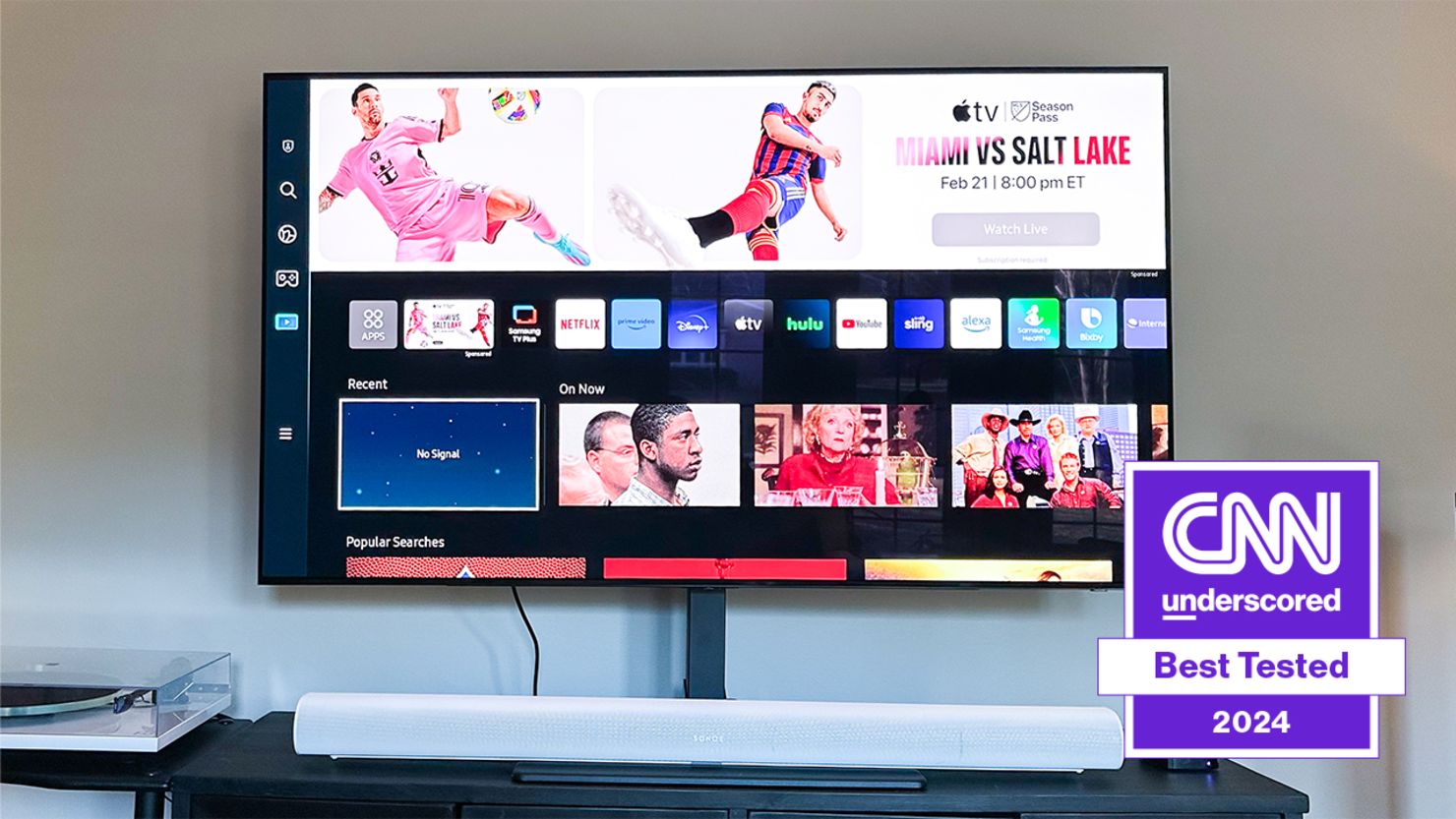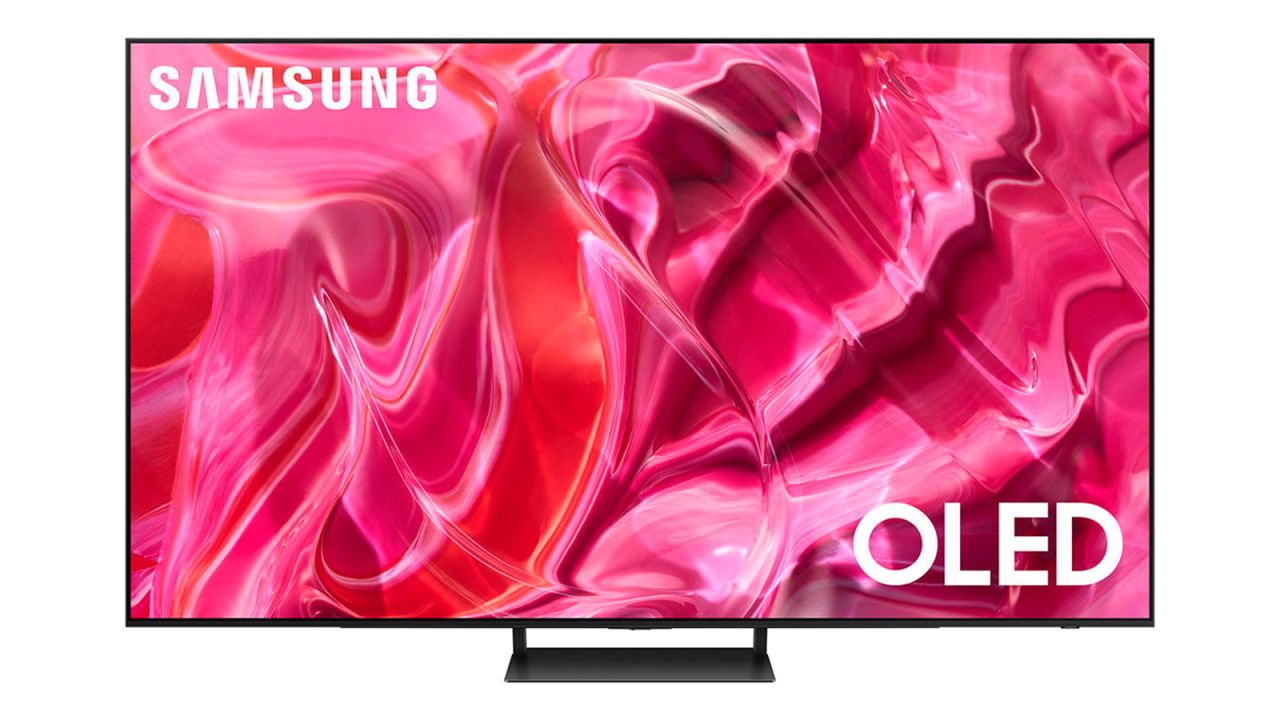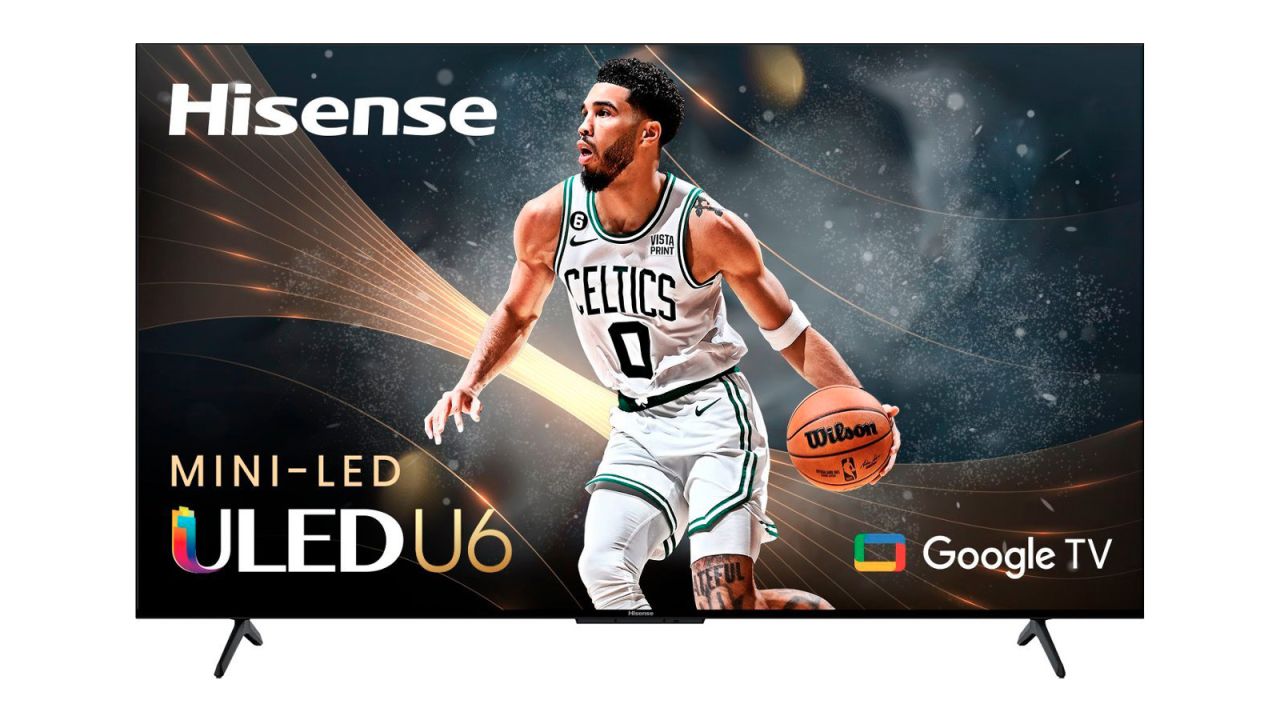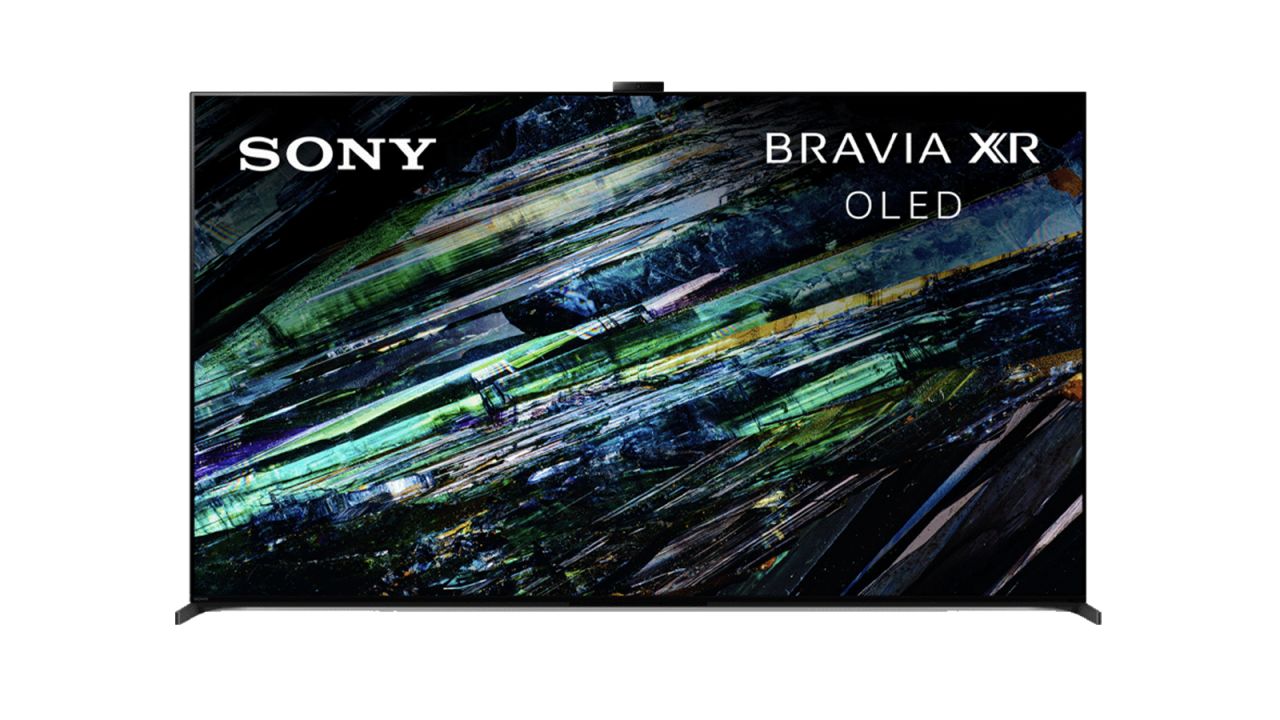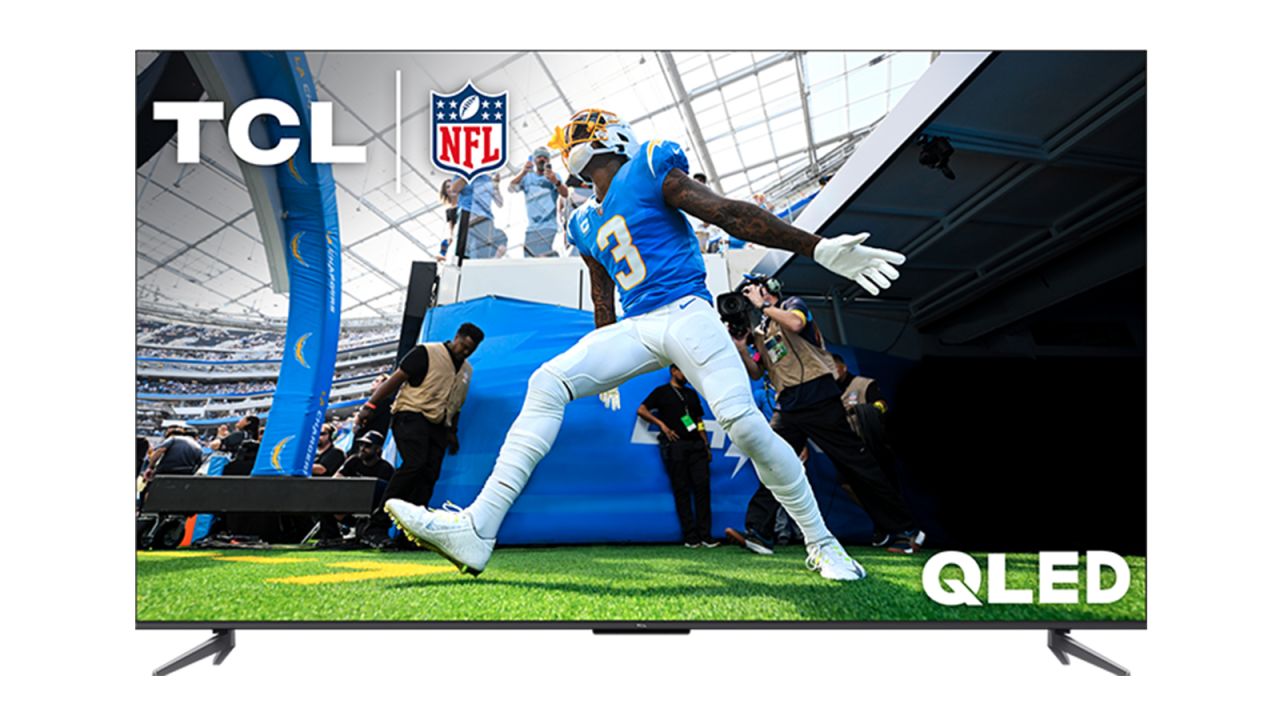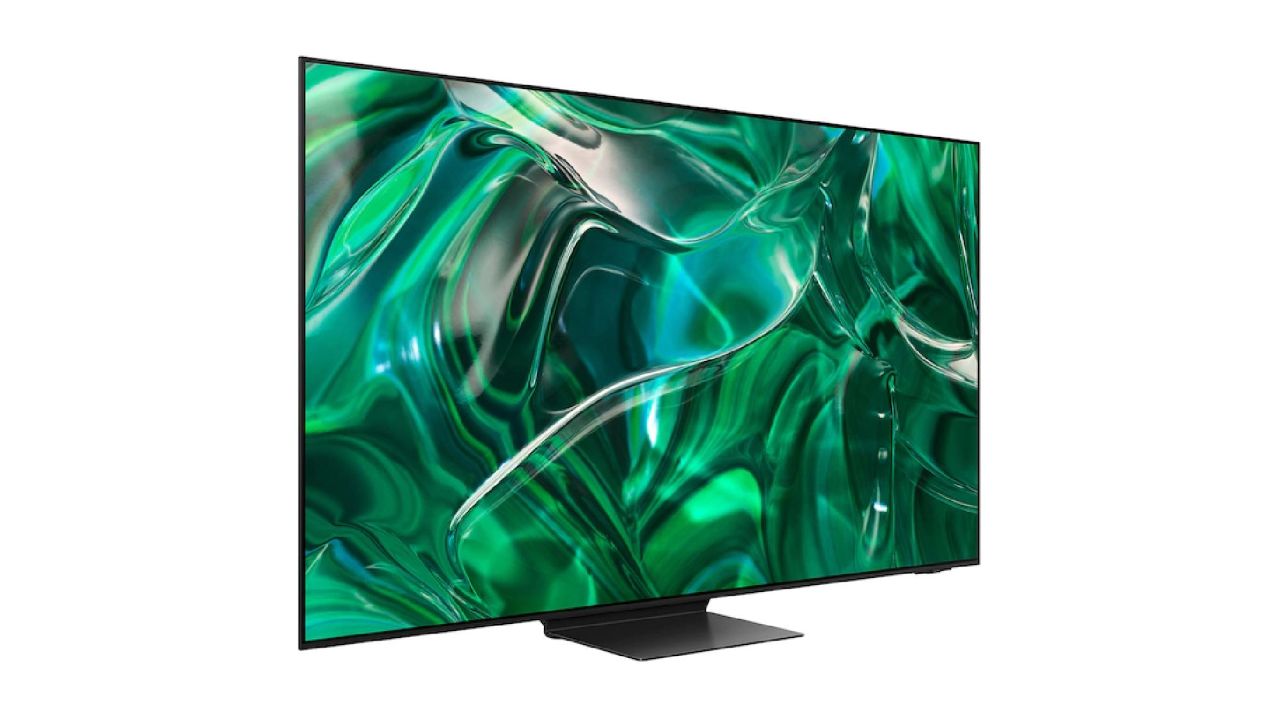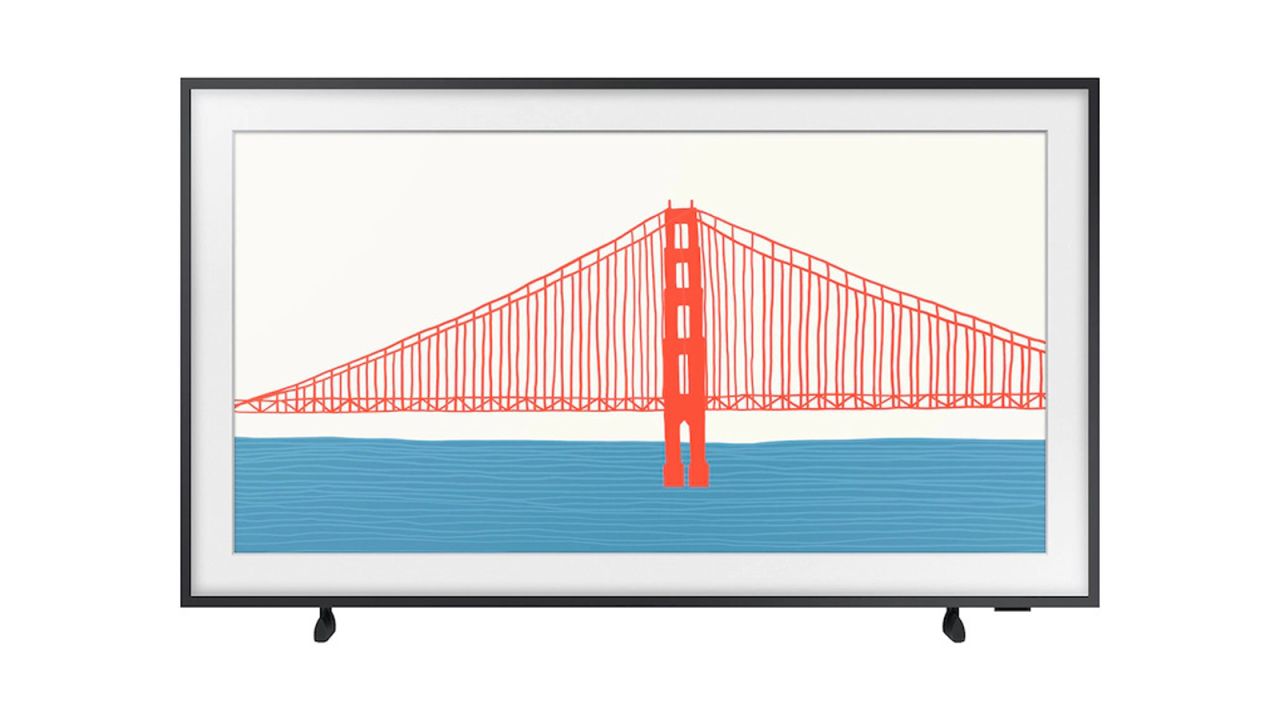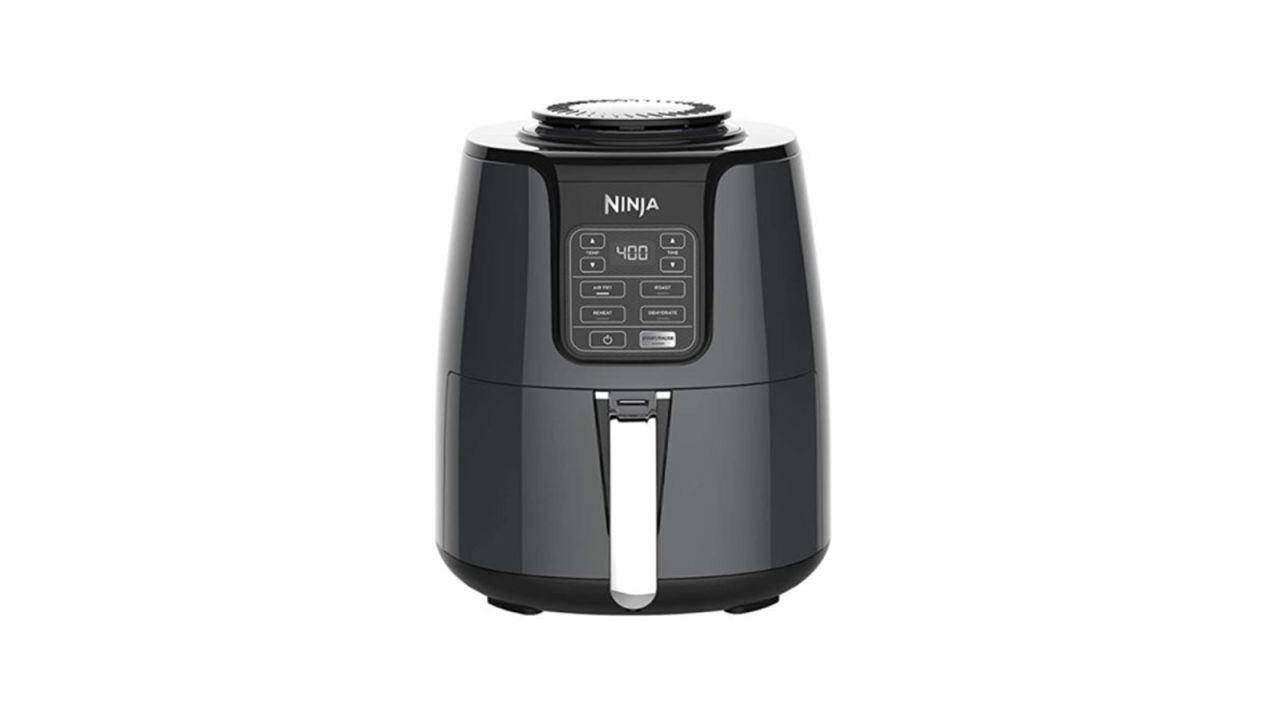The best smart TVs we tested
Best smart TV: Samsung OLED S90C
Best budget smart TV: Hisense U6K
Best midrange smart TV: Hisense U8N
Best luxury smart TV: Sony Bravia XR A95L
You’ve picked a great time to buy a new TV. There’s never been a better combination of quality and price available. Whether you’re looking for a bargain or the best, there’s an option for you.
TVs are brighter and produce better color and contrast than ever before. Recent advances in TV tech —?such as quantum-dot OLEDs and Mini-LED LCDs —?have trickled down from expensive, flagship TVs to models the rest of us can afford.
While the best TVs are still a significant investment, you can find large screens with good colors and contrast for not a lot of cash too. If you can spend more, you’ll be wowed with what you see.
To help steer you to the best choices, we spent the past few months testing the latest available models of a range of TVs, from 43 to 85 inches. After many hours binging our favorite shows and movies in the name of research, comparing aspect ratios and display quality, and testing the smarts of each model, we found that these three TVs rose to the top.
The S90C hits a sweet spot among current TVs, balancing performance and price. It impresses with vivid colors and intense brightness, making the images seem to jump off the screen. It’s packed with the latest tech, making it an excellent choice for gamers too.
The U6K features high-end tech — Mini LEDs and quantum dots — at a bargain price. You get impressive colors and contrast, though you’ll give up wide viewing angles and have to deal with a sluggish interface.
If you want flagship-quality color, brightness and audio — and don't want to spend a few grand on a fancy OLED — the Hisense U8N is a fantastic middle ground.
If price is no object, no TV delivers a more impressive viewing experience than the A95L. Everything looks superb, whether in 4K or standard HD, and it’s packed with more features than you probably need.
Best smart TV: Samsung OLED S90C 4K UHD Tizen TV
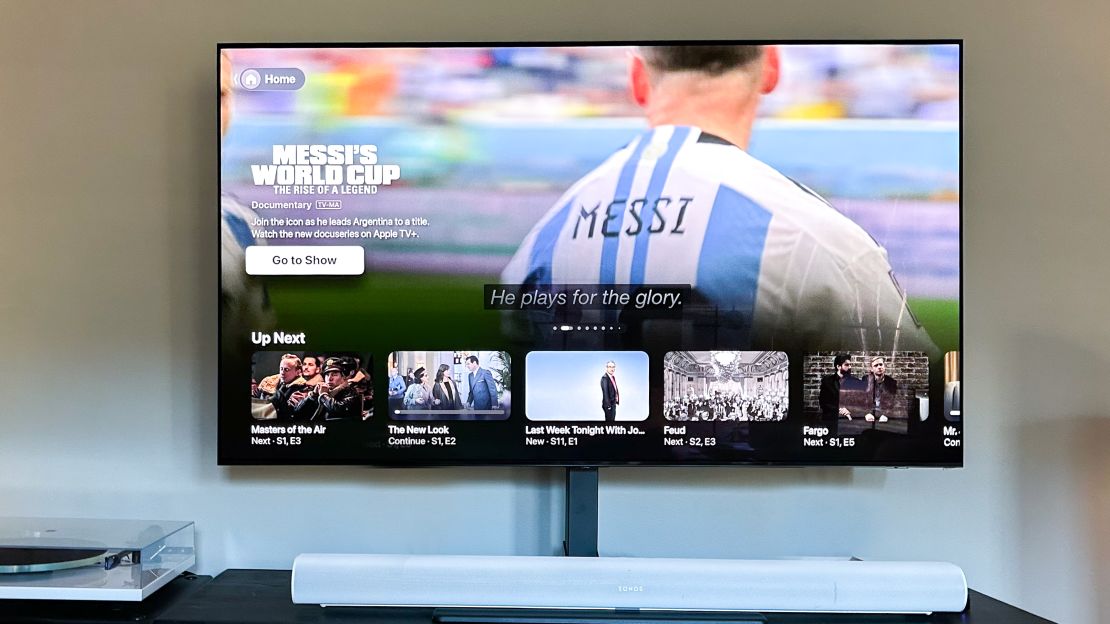
The Samsung OLED S90C balances price and picture better than any other TV available today. You can certainly find TVs for less — or for a whole lot more —?but if you’re looking for an impressive viewing experience without hurting your wallet too much, the S90C is the one.
The colors are what you’ll notice first. Like Samsung’s more expensive S95C, red, blues and greens jump off the screen and draw your eye. It makes watching feel lively, whether it’s the fiery explosion of the atomic bomb in “Oppenheimer” or players streaking across the field during a soccer match.
The S90C’s quantum-dot OLED screen is plenty bright for almost any room, so?you needn’t worry about the typical brightness compromise to get an OLED’s film-like picture. The tech produces excellent contrast, revealing details in dark scenes,?though it doesn’t support Dolby Vision, which could cause some people to choose LG’s similarly priced C3 instead. The S90C also looks good from a variety of angles, making it a great fit for rooms in which many people will be watching at the same time.
Gamers will love that all four HDMI ports support HDMI 2.1 — ideal for making the most of the PS5 and Xbox Series X’s ultra-smooth 120Hz gameplay capabilities — and it has very low latency. Paired with Samsung’s Gaming Hub, which gives you access to many of the top game streaming services, the S90C can be a centerpiece of a game room.
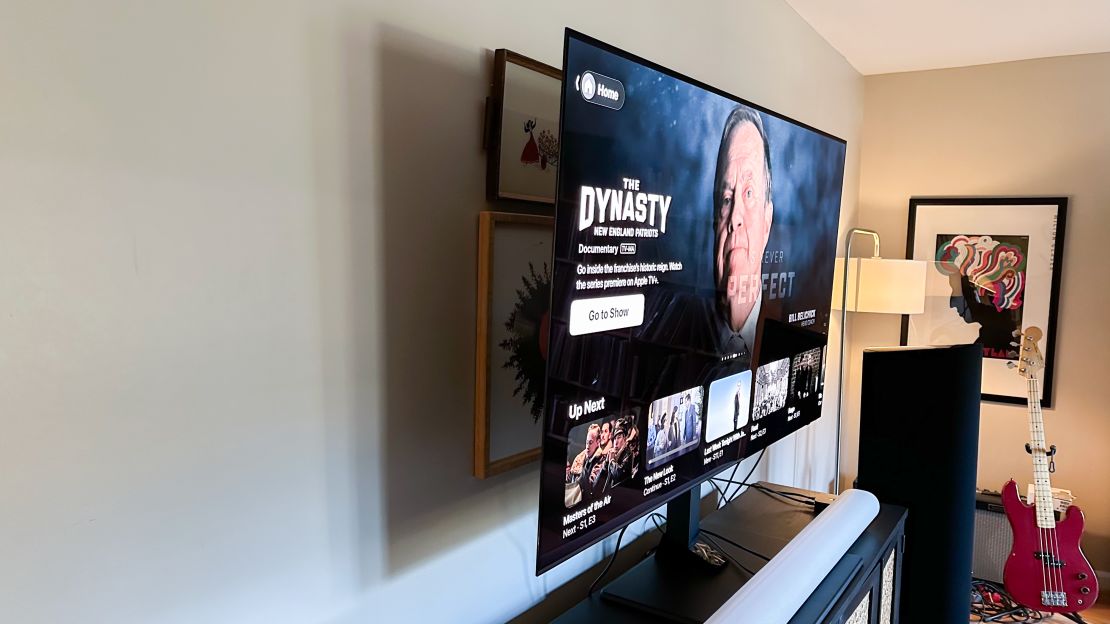
While not as slim as the S95C, the S90C’s design is stylish and looks well built. It certainly appears more polished than many sub-$1,000 sets.
The S90C runs Samsung’s Tizen operating system, which features most apps you’ll want and ties into Samsung’s SmartThings smart home system. Navigating the OS is zippy and won’t keep you waiting when you launch apps.
The S90C’s biggest drawback is its price; it’s typically available on sale for around $1,600 for the 65-inch model. But you get a lot of the tech and picture quality of the much more expensive S95C, which typically runs over $3,000. It may be hard to justify the expense when many TVs around $1,000 deliver a pretty good picture, but if you can find the extra money, it’s worth it.
Best budget smart TV: Hisense U6K Mini-LED QLED 4K Google TV
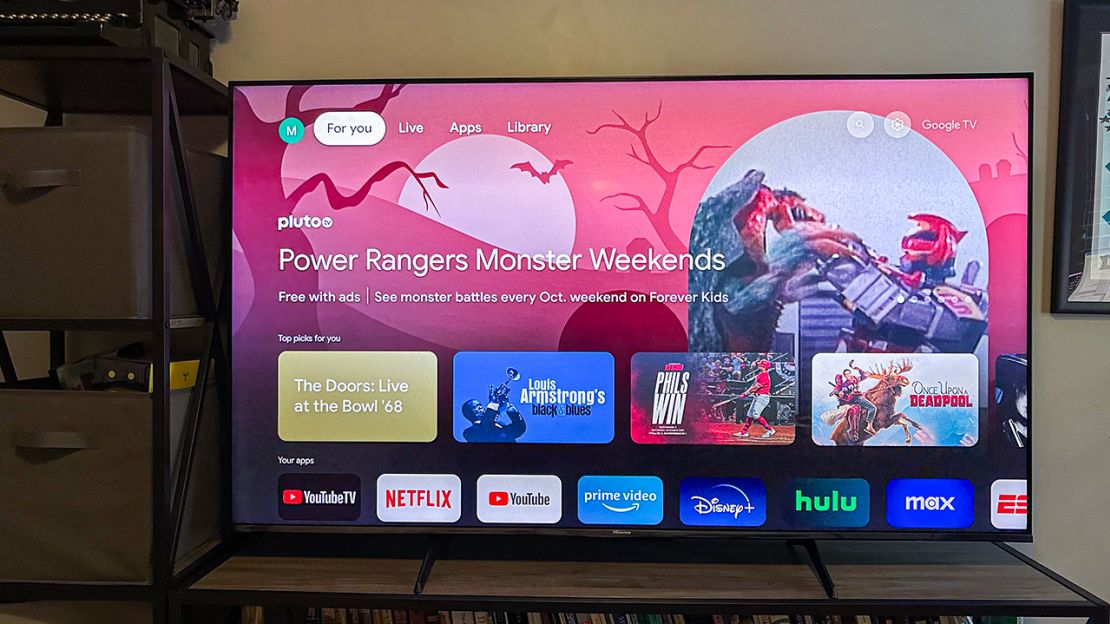
You don’t have to spend much to get an impressive picture these days. Starting at just under $500 for the 55-inch model, the Hisense U6K incorporates Mini-LED and quantum-dot technology to deliver eye-popping colors and rich contrast —?something you’d pay well over a thousand dollars for a few years ago.
Reds, greens and blues radiate from the screen, and you can see details in dark scenes that most lower-cost TVs can produce. It even has decent sound on its own, though a soundbar will improve your viewing experience.
You do give something up to get a gorgeous picture at this price, though. In the case of the U6K, it comes at the expense of speed. The TV runs Google TV, a robust smart TV platform?but one that taxes even higher-priced models. The result is a sluggish interface, but you can overcome that by adding an external streaming device, such as a Roku Streaming Stick.
The U6K also had some trouble handling fast-moving sports action —?it stuttered during playback, especially in 4K —?and it looks best when you’re watching directly in front. If you’re off to the side, the picture loses its vibrancy.
But for the money, it’s hard to fault what you see on the screen when watching the Hisense U6K.
Best midrange smart TV: Hisense U8N Mini-LED ULED 4K Google TV

If you’re looking to spend less than $1,500 on your next TV, it’s hard to do much better than the Hisense U8N. We found this TV to punch well above its price range in our testing, with excellent brightness — ideal for sunny rooms — and very reliable color.
The U8N’s extra-luminous panel allowed us to see every detail in shows like “House of the Dragon” and hit movies like “Dune: Part Two,” even when the action took place in a dark environment. This is all made possible by Hisense’s proprietary ULED tech, which uses Mini LEDs and more than 2,000 local dimming zones to pump out better picture quality than what you’ll get from a standard LCD television. You shouldn’t expect the same great contrast and black levels as an OLED set like the Samsung S90C, but this comes close.
We often find Google TV to be pretty taxing for the average TV, but the U8N had no problem handling Google’s operating system as we bounced between apps and fiddled with settings — which you’ll find no shortage of here. The U8N’s four HDMI ports include one eARC port and two HDMI 2.1 ports, meaning you’ll be able to enjoy high-quality audio and take advantage of smooth 120Hz gaming on your PS5 or Xbox Series X. Speaking of audio, the U8N’s offers pretty impressive built-in speakers with Dolby Atmos support. While you’ll still get better sound from a dedicated soundbar, they’ll do perfectly fine for casual viewing.
The U8N isn’t the best when it comes to upconverting, as sports games became blurry when we upscaled them from 1080p to TV. This is something that LG’s and Samsung’s premium sets excel at. We also found the stand a bit hard to assemble during the setup process. However, those are all relatively minor trade-offs considering the brightness, color and performance you’re getting for the money — especially for a TV we’ve seen drop close to around $1,000 during sales.
Best luxury smart TV: Sony Bravia XR A95L QD-OLED 4K HDR Google TV
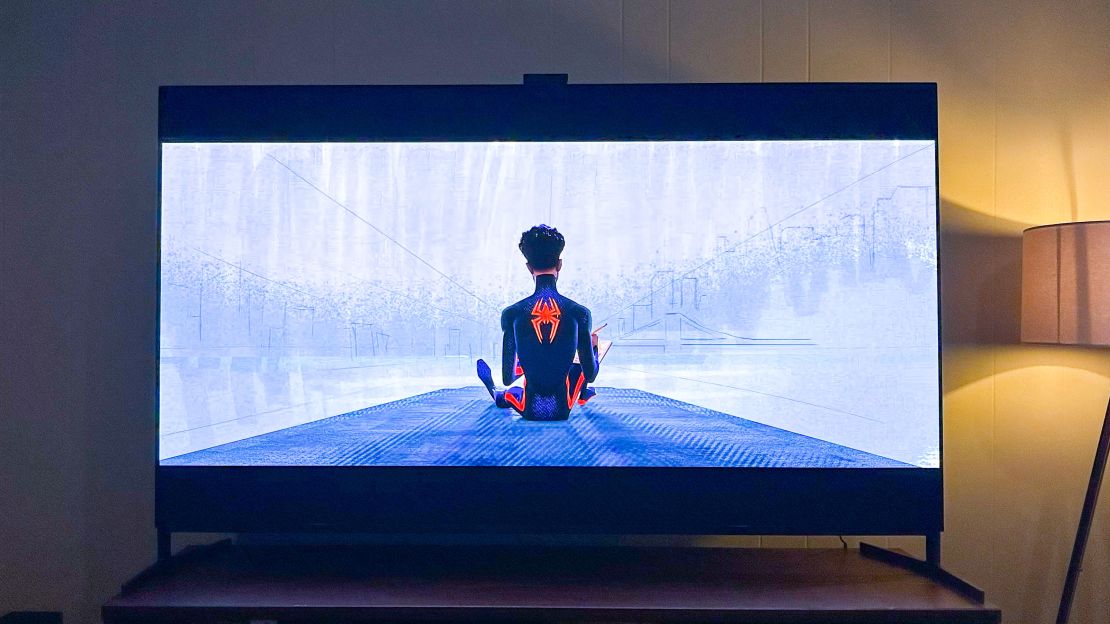
If you want the best TV no matter the cost, the Sony Bravia A95L is the one you want to buy. Starting at about $2,600 for the 55-inch model, the A95L isn’t for those on a budget. But what you get is the most impressive TV we’ve ever tested.
The A95L’s picture is the star of the show. Its OLED screen incorporates quantum-dot technology to produce excellent contrast, which makes it easy to see activity in dark scenes. Colors look amazingly realistic and accurate, though they aren’t as vivid as Samsung’s flagship S95C (another very impressive TV). In addition to making the most of 4K signals, the A95L does a great job of upconverting regular HD video to make it seem like it’s in 4K (or at least close to it).
But there’s more to the A95L than just the picture. It is jam-packed with the latest tech. Its processor easily handles the strain of Google TV, resulting in a quick interface. The A95L supports Dolby Vision in Game Mode, translating the impressive picture to gaming. Its 2.2-channel sound system spreads throughout the room and delivers some bass. It even comes with a Bravia Cam, which you can use for video conferencing, but more importantly, it can calibrate the picture to the current conditions of the room.
The only downside to this TV is the price. But if you want the best TV, this is the one to buy —?and it should please your eyes for years. Think of it as an investment in your future happiness.
Should I buy an OLED or Mini-LED TV in 2024?
It’s getting harder to choose between OLED and Mini-LED LCDs. It used to be simple: You picked OLED if you cared most about picture quality, and LCD if brightness was most important.
Quantum-dot OLED (QD-OLED) is the latest in premium TV panel technology. QD-OLED increases brightness and vibrancy, as well as produces more accurate colors. While still not as bright as LCD (in most cases), QD-OLEDs should be bright enough for well-lit rooms in the daytime.
Mini LEDs combined with quantum dots bring LCD TVs closer to OLED’s ideal picture quality by improving contrast while keeping the sharp detail and eye-burning brightness that LCDs are known for.
So what does this mean? Brands continue to release models using both OLED and Mini-LED technology, all of them battling for the title of the best possible picture, but in reality, they’re providing alternatives for buyers looking to watch in different types of rooms. At this point, OLEDs still have the edge on absolute picture quality but are still less bright, so they’re a better fit for darker rooms, while brighter Mini LEDs can work in spaces that get a lot of natural light.
As these technologies evolve, we’re seeing more and more variations on them. TCL, for example, just unveiled its new QD-Mini LED TV series, which is a mouthful of a term that essentially promises the high brightness of a Mini-LED television with advanced processing that aims to provide richer colors and more prominent blacks than the company’s previous Mini-LED sets. We also recently got our eyes on the Hisense U9N ULED TV (short for Ultra LED), which is a similar variation on Mini LED that impressed us with its QLED-like color quality and remarkably high brightness. Both TCL’s and Hisense’s latest sets are rated for a peak brightness of up to 5,000 nits, which trumps many of our favorite OLED sets by a few thousand nits.
How we tested
After combing through reviews, shopping around and tapping into our own expertise, we tested the top TVs of the year. And though they vary in screen size and capabilities, we endeavored to create testing categories that would make for a fair comparison.
We were careful to call out the core technology in the TVs we tested and to note how (or if) it seemed to impact the viewing experience. Our testing pool consisted of a mix of OLEDs, QLEDs and LED panels. QLEDs and LED panels are similar in that they both use a backlit panel that transmits light through filters containing pixels to create an image. An OLED is entirely different as it emits the image through individual pixels.
We scored each TV on picture and sound quality, with a major emphasis on the former. We also scored them on the smart interface, setup process, design, connectivity, remote and warranty.
We ran the TVs through the setup process and tested all the features and options, such as picture modes, availability of specific services (like casting support) and how easy it was to navigate the interface.
When it comes to TVs, the differences in sound and picture can be subtle. Our extensive testing included watching the same programs across the devices to create an apples-to-apples comparison for noting those small differences.
We looked at the nuances of each remote, feeling for ergonomics and rating the design; a cluttered, clunky remote didn’t do as well as a thin, organized one.
We evaluated our selections using the following parameters.
Setup
- Packaging: We unboxed the TV, fully removing it and its components from any packaging. We took note of how easily and quickly we could strip away styrofoam, cardboard and plastic. Most importantly, we looked at how easy it was to get the TV out of the box.
- Setup and instructions: As we set up the TV, we jotted down any grievances we had with the process. This included assembling any hardware, like the TV stand, to setting up software, such as Google TV, Samsung Tizen or Roku TV. Instructions that required fewer steps, or were easy to visually interpret, scored better.
Design and appeal
- Material design: We researched and inspected the materials from which each TV was constructed. We preferred a balance between lighter materials, which made setup easier, and quality plastics and metals.
- Bezels: We measured the ratio between bezels — the frame around the display — and the display itself. A display that occupies a greater portion of the front of the TV was naturally preferred.
- Access to ports and buttons: We checked out how easy it was to plug in cables and access ports once the TV was set up. We also noted where buttons were located and how easily we could access them. (Buttons requiring yoga poses to reach them were scored poorly.)
Ports and connectivity
- Overall: We tested every port, wireless function and remote connection for functionality and latency. We also noted if HDMI ports were ARC, eARC or 2.1 enabled.
Picture quality
- Brightness: We compared the visual brightness each TV could achieve. During programs like “Ahsoka,” we paid close attention to bright highlights and glossy objects like lightsabers and spaceships.
- Contrast: We observed the edges between various objects and people during programs on each TV and looked at these edges in both dark and bright lighting conditions. Edges that were crisp and visually distinct were preferred.
- Vibrancy: We compared the color intensity of each TV. During various programs, we noted colorful lights and surfaces in order to contrast these hues among the TVs.
- Standards Support (Dolby Vision/HDR/CG): We noted if each of these standards was available on each TV and compared the quality of each mode among TVs.
- Overall: For the overall picture quality, we put each TV through an abundance of content, including “Oppenheimer,” “Barbie,” “Dune,” “Avatar: The Way of Water,” “John Wick 4,” “Ahsoka,” “Loki,” “Avengers: Infinity War,” “Ted Lasso,” various professional and college sports and countless other media.
Sound quality
Editor’s Note: The built-in speakers on most TVs in 2024 are generally lackluster. If high-quality audio is important to you, given the many relatively affordable options now available, we recommend adding an external soundbar or home theater setup to any of the TVs we tested.
- Soundstage: We noted the extent to which each TV could produce a sense of 3D sound. For example, if an instrument is on the far edge of a stage during a performance, a TV with good soundstage will authentically reproduce the position of the sound.
- Low: We listened for the clarity and depth of sounds on the lower range, such as bass, drums, deeper instrumentals and vocals. We took note of any artifacts, such as crackling or buzzing, that can accompany such sounds.
- Mid: We listened for the clarity of sounds on the medium range, such as vocals, midrange guitar and environmental noise.
- High: We listened for the clarity and pitch of sounds on the higher range, such as high-pitched guitar, vocals and stringed instruments. We noted any common artifacts such as poor volume balancing or screeching when notes get too high.
Smart interface
- Ease of use: We checked out how easy it was to navigate to the menus. Examples include how many actions it took to get from A to B, how visually available important menus were, how easily we could type in text and how quickly we could return to a home menu.
- Services available: We compared how many services, from streaming services like Disney+ and Netflix to music players like Spotify and Pandora, were available on each TV.
- Casting support: We determined if casting — or mirroring activity from a mobile device or mobile app onto the TV screen — was available.
Remote
- Ergonomics: We considered how the TV’s remote felt (and fit) in our hand and if it easily slipped out. Remotes that were generally easier to hold performed better.
- Design: We took a look at the topographical organization of buttons and shortcuts (e.g., a button that specifically opens Hulu). We preferred remotes that were organized and didn’t stuff too many nonessential functions into a small space.
Warranty
- Warranty:? We researched the duration of coverage of the TV’s warranty/warranties.
Others smart TVs we tested
The Hisense U9N is a compelling premium alternative to LG and Samsung for a competitive price.
The Hisense U9N sees the budget-minded brand going after the premium TV throne, and it mostly succeeds. Like other Hisense TVs, the U9N stands out with incredible brightness (5,000 nits, to be exact) and impressive contrast and color that comes close to what we saw on models like the LG C4 and Samsung S90D. The U9N also continues Hisense’s streak of offering some of the best built-in speakers in the game, with impressive 4.2.2 audio that could serve as a perfectly fine soundbar replacement for less discerning ears. We still think most folks in this price range are better off with an LG or Samsung due to the better picture quality, but the U9N is a worthwhile alternative to keep in mind, especially if you catch it on sale.
The TCL QM8's color and brightness are some of the best we've seen for a midrange TV, though it falls to the Hisense U8N in some key places.
An extremely strong contender to the midrange throne, the TCL QM8 pumps out excellent colors that are typically reserved for sets that cost $2,000 or more. It’s got all the ports and tech to support smooth gaming and sports streaming, as well as support for key standards like Dolby Vision. However, its just-okay performance and audio give the Hisense U8N the edge here.
TCL's Q6 offers a lot for the price and is a solid buy, but it's marred by its clunky interface and tinny sound.
The TCL Q6 also gives you a lot for your money, just like our budget pick, the Hisense U6K. The Q6’s colors are vivid, and it produces a good overall picture. Best of all, you can often find it for less than the U6K. However, it doesn’t handle dark scenes well and suffers some similar issues as the U6K, such as a sluggish interface and limited viewing angles. But if you find a great deal on one, you may be able to overlook those things.
You get what you pay for with Samsung's S95C, including impressive colors, contrast and brightness. Still, we prefer the A95L at this luxe price point.
In the money-is-no-object category, we prefer the overall picture quality of the Sony A95L, but Samsung’s flagship OLED TV makes a strong case. Its colors are more vivid than the A95L, and the display handles hues especially well. It also has eye appeal: The electronics are in a separate box, allowing the panel itself to come in at just 0.4 inches thick.
However, like other Samsung TVs, it doesn’t support Dolby Vision, which may be a deal breaker for you. And the Sony A95L just does more for the money. But if you prefer Samsung to Sony —?and you can afford it —?you’ll probably be just as happy with the S95C as with the A95L.
Though the picture quality isn't amazing, Amazon's Fire TV is a compelling choice for budget-conscious shoppers, especially when it's on sale.
There is no beating the price for Amazon’s Fire TV Omni when it’s on sale. But it’s only a good choice if you are interested in smart TV features (and Amazon content) over picture quality.
Like other budget options, it has a standard LED panel, and it can’t get overly bright or intensely dark, which leads to a lack of vibrancy and overall poor contrast. It’s not the worst we’ve ever tested, but we think anyone who cares about picture quality should step up to TCL’s 6-Series.
There are some good points for those mostly interested in convenience. The Fire TV interface is much improved in responsiveness on the Omni, and we like being able to control the entire experience with our voice through Alexa.
Unlike your average TV, The Frame doubles as an attractive lifestyle product that can liven up your living room with museum-quality digital art.
We dig The Frame because rather than just being a blank black screen when it’s off, it not only shows art but with its ultra-slim bezel and wall mount, it looks like it was meant to do just that. Aside from it’s art showcasing features, it’s a crisp, vibrant QLED panel that boasts a high refresh rate, and it’ll get the job done for watching the big game or taking in the latest superhero flick. You do end up paying a premium for this with a starting price of around $600, and that doesn’t include the physical “frame” that attaches around the TV itself.
The Q80T is a fine smart TV with striking sound and picture quality. But the Sony A95L is just a better TV in this class, offering the latest tech on top of a great viewing experience.
We were impressed with the picture quality of the Samsung Q80T, thanks to the ample backlighting and the quantum processor. Sound quality was surprisingly great as well.
It does fall in the upper echelon of picture quality by offering more details than our previous budget pick, though at a price that stings a bit more. The Q80T also supports fewer services than some competitors. Those looking for a luxury panel will still find the Sony A95L a better pick and those looking for a more affordable TV will be happy with the Hisense U6K.
When it comes to unique design, this rotating TV from Samsung is up there with The Frame. There aren't that many use cases for this quirky feature, but it is great for watching TikToks and screencasting from your phone.
If we had a unique design pick, the Samsung The Sero would have taken the cake. We first saw this motorized TV — and previewed it — at CES 2020. It stands as the most unique TV we’ve ever tested. With a press of a button, the TV screen flips from a vertical view to a horizontal one.
So why the flipping design? Well, it integrates with your phone and is targeted at millennials. You can screencast your Android phone and basically have it mirrored on The Sero. When you flip your phone, the TV screen flips. Truth be told, it’s pretty cool in person. It’s great for viewing TikToks and really sits as a talking point wherever it is set up.
We’re still waiting on the promised iOS support, but The Sero stands as a lifestyle piece or a conversation starter more than a TV for everyone.
FAQs
Editor’s Note: A previous version of this story included nine additional TVs in the “Others we tested” section (including models from Vizio, Toshiba, TCL, Samsung, LG and Sony) that have become unavailable since our latest update.
